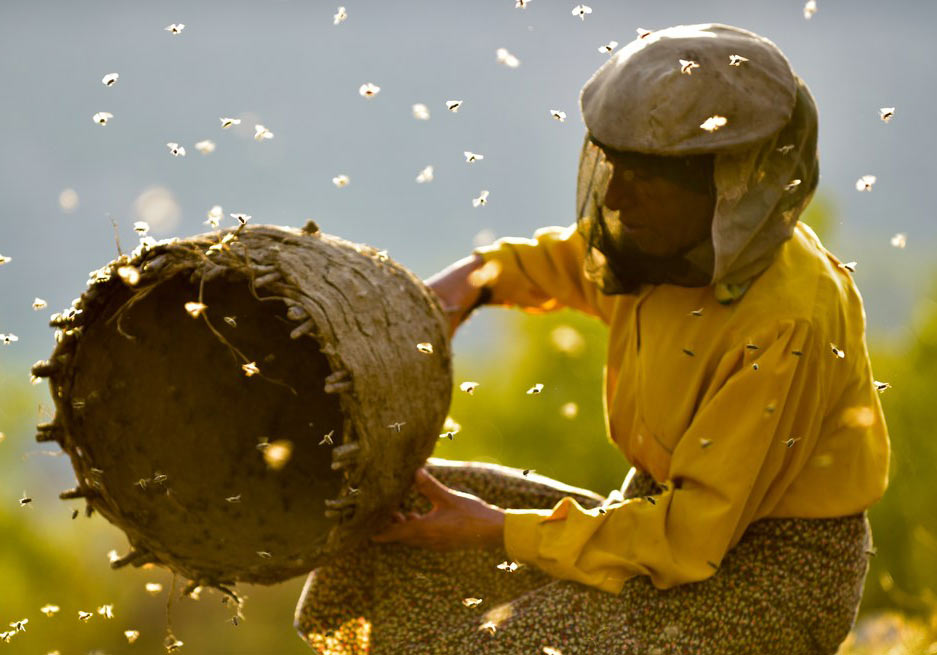Like Sweetgrass before it, Honeyland drops you into the old rural ways. Documentary directors Tamara Kotevska and Ljubomir Stefanov spent three years filming the life of Hatidze Muratova. This lean, hard-working woman in her mid-50s practices an almost extinct craft: She’s a gatherer of wild honey in the vicinity of her deserted village. The bees hive up inside stacked-stone hearths and chimneys, all that are left of what were once stone huts.
This is an obscure corner of the Balkans, where it already looks as if it’s after the end of the world. The country is so little known that its name change didn’t make it into most reviews of Honeyland; as of last February, Macedonia is now known as the Republic of North Macedonia. Hatidze is ethnically Turkish in a land where Turks make up 3 percent of the population. She speaks an old Ottoman dialect that isn’t easily understood even by Turks.
This area had a lot of different flags planted on it during the last century. This village of Bekirlijia, a four-hour walk from the North Macedonian capital of Skopje, was once intended as a place of resettlement for Turks. Over the years, they drifted away from its almost bald hills. They left Haditze to practice her honey gathering in peace, and to tend her disfigured, slowly dying mother. She hikes up the narrow ledges of the hills and picks open the rocks, smoking the bees out with a dung-fired smoker. She removes honeycombs luscious with honey, and slices them in half — one side for her, one side for the bees. (She also spills some honey on the rocks to feed them.) Haditze’s skills are such that she’s able to do this unveiled and barehanded, calming the bees by murmuring to them. They crawl on her fingers as if they were pets.
The life is interrupted when some new neighbors drive in to homestead the village. It’s the Sam family: mom, dad Hussein Sam, their seven or eight kids and several chickens that live inside their trailer. They pound up a tin roof and prepare to raise milk cows in a corral made of the foundations of a ruined house. In all innocence, Haditze teaches him how to gather honey, trusting that there’s enough for everyone.
Hussein mucks it up with overproduction, and by introducing aggressive, perhaps Africanized bees. Hussein’s kids—particularly the eldest, the honey-woman’s favorite—are tough enough to deal with the half-wild cattle that kick them and knock them over. But they can’t deal with Hussein’s viciously stinging bees.
The hapless father gets indentured to a pushy Bosnian middleman who insists that he can only accept 20 kilos of honey at a time; it’s a different matter for Haditze who hauls her honey to Skopje, jar by jar, chatting with the respectful shopkeepers at the main market to get the best price.
Hatidze trusted the filmmakers. Perhaps she was unclear on the concept of what movies are, living as she does in a stone-floored house without electricity or plumbing. And Kotevska and Stefanov honored Hatidze. Though from what we see, there is an open question of what was docudramized and what just naturally appeared in front of the lens.
Contrast and conflict are essential for any kind of filmmaking, but there’s a gradual sense here of the story being bent toward an agenda. Honeyland becomes a fable of how the new methods infringe the old ones. The contrast is underscored as heavily as if Kotevska and Stefanov had set out to retell the ancient story of the goose that laid the golden eggs. Honeyland is a haunting and immersive film, but the problem with it is that nothing in the world is quite this simple.












